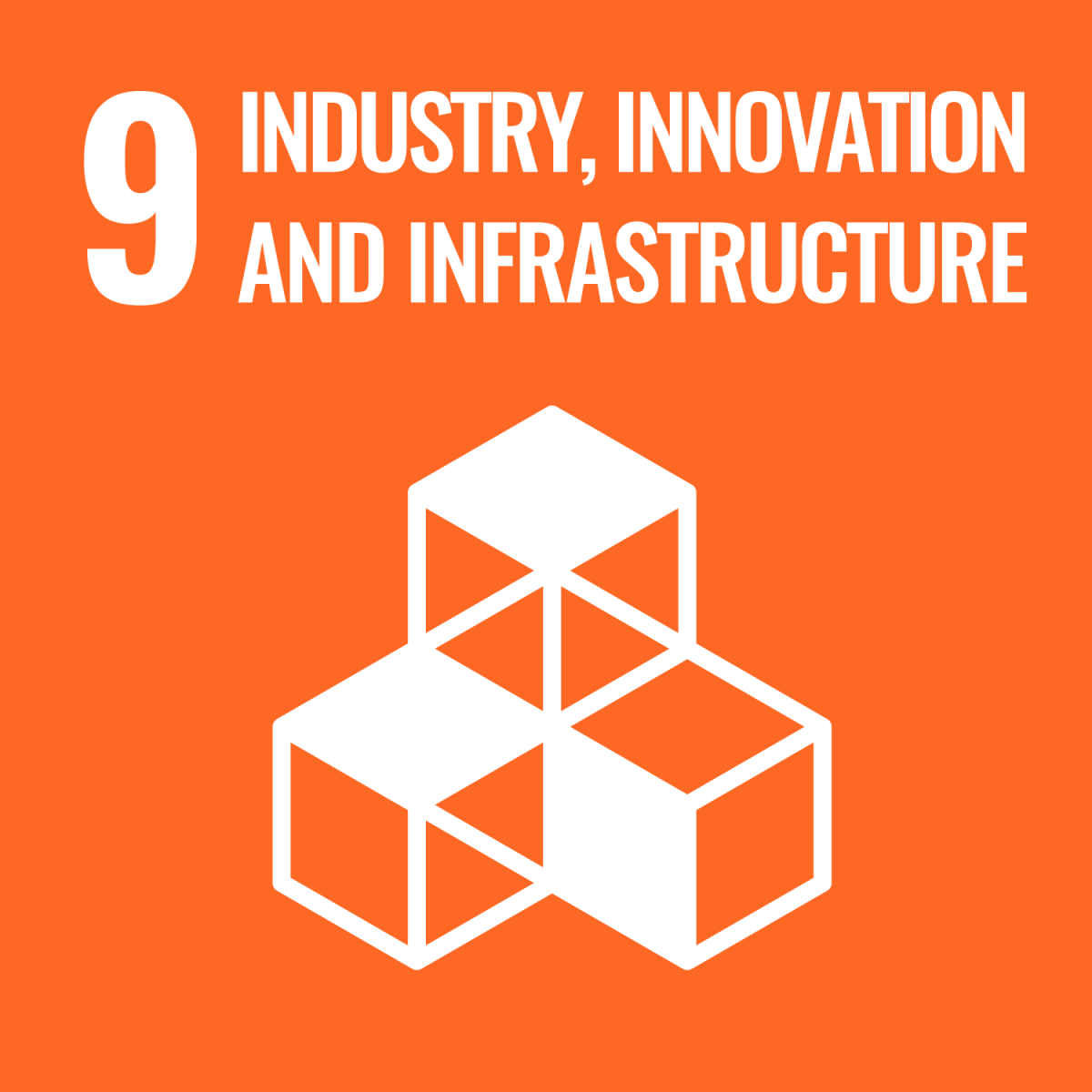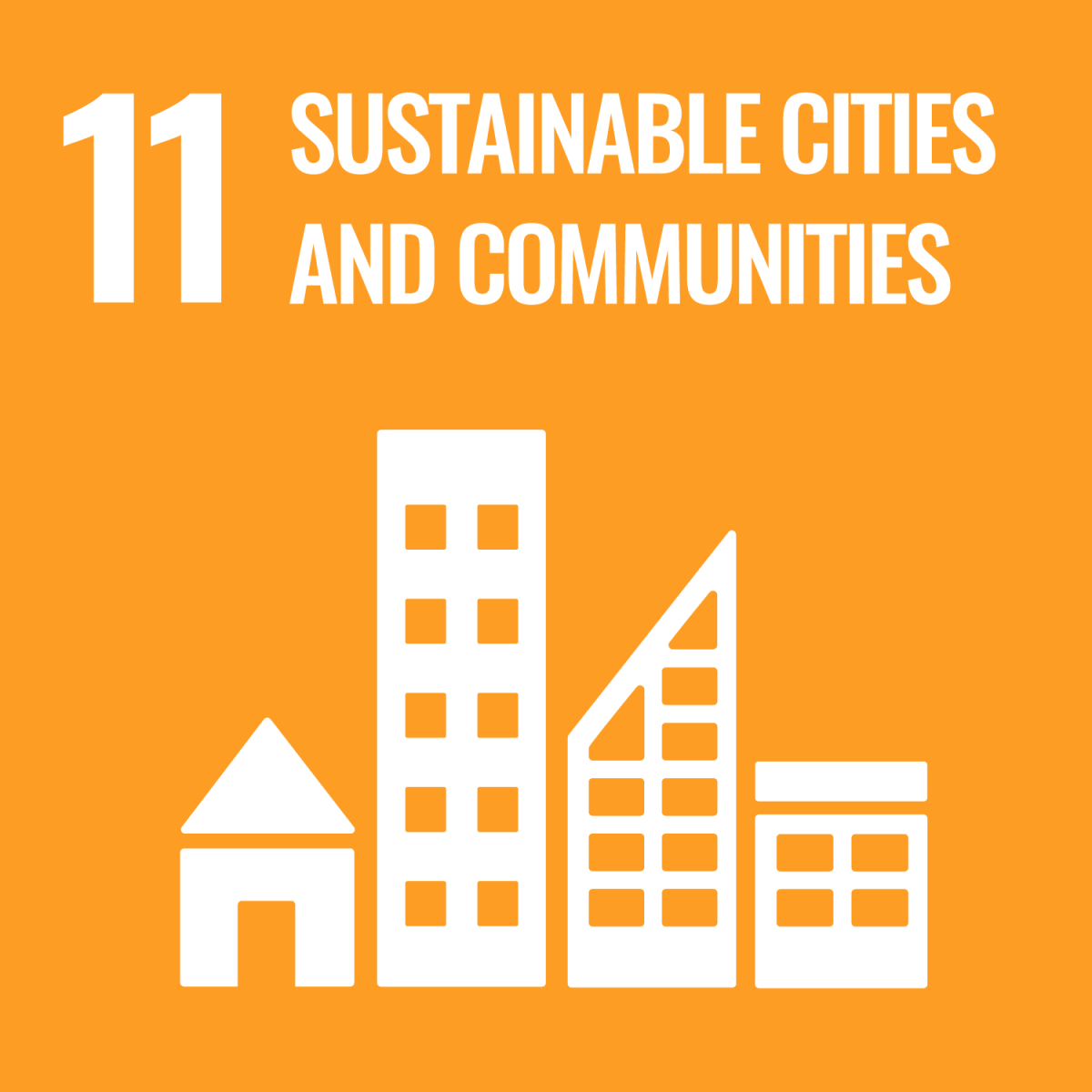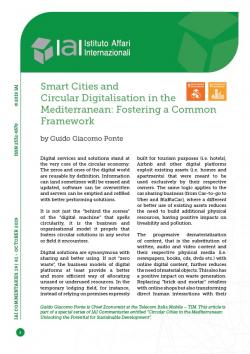Smart Cities and Circular Digitalisation in the Mediterranean: Fostering a Common Framework
Smart Cities and Circular Digitalisation in the Mediterranean: Fostering a Common Framework
Guido Giacomo Ponte*
Digital services and solutions stand at the very core of the circular economy. The zeros and ones of the digital world are reusable by definition. Information can (and sometimes will) be erased and updated, software can be overwritten and servers can be emptied and refilled with better performing solutions.
It is not just the “behind the scenes” of the “digital machine” that spells circularity, it is the business and organisational model it propels that fosters circular solutions in any sector or field it encounters.
Digital solutions are synonymous with sharing and better using. If not “zero waste”, the business models of digital platforms at least provide a better and more efficient way of allocating unused or underused resources. In the temporary lodging field, for instance, instead of relying on premises expressly built for tourism purposes (i.e. hotels), Airbnb and other digital platforms exploit existing assets (i.e. homes and apartments) that were meant to be used exclusively by their respective owners. The same logic applies to the car sharing business (from Car-to-go to Uber and BlaBlaCar), where a different or better use of existing assets reduces the need to build additional physical resources, having positive impacts on liveability and pollution.
The progressive dematerialisation of content, that is the substitution of written, audio and video content and their respective physical media (i.e. newspapers, books, cds, dvds etc.) with online digital content, further reduces the need of material objects. This also has a positive impact on waste generation. Replacing “brick and mortar” retailers with online shops but also transforming direct human interactions with their virtual equivalents reduces physical displacements, which generate consumption of goods, fuel and air pollution.
The Mediterranean region is facing multiple challenges and cities can become laboratories where digital smart technologies can help provide innovative and creative solutions for sustainable development. In particular, northern Mediterranean states can demonstrate the benefits of harnessing the full potential of digital innovations and gradually provide lessons and best practice solutions for southern Mediterranean states. Given that both shores of the Mediterranean share numerous challenges – from climate change, to urbanisation, resource scarcity and the need for renewable solutions – there is a great potential, and need, for shared approaches and common frameworks.
Innovative solutions for “smart cities” require the availability of different types of information from a variety of sources. Smart solutions are already having an impact on the dynamic planning of transportation resources: the mismatch between citizen needs and the availability of transportation resources in a particular area of the city at a particular time of the day can be detected and remedied (e.g. by dispatching more car sharing vehicles) only if the smart city “digital hub” has updated information on both demand (e.g. the number of people living in an area who will likely attend a football match at 4 pm) and supply (e.g. the availability and capacity of transportation resources that covers that route at that time of the day).
Unfortunately, sectors of smart cities have so far been mostly treated as separate issues. Different sectors use different standards, causing data fragmentation. This makes it almost impossible to design cross-sector solutions, and therefore requires radical changes. All available information has to be gathered and collected in a meaningful and interoperable (digital) format within the same unified repository. Installing sensors and having connected “urban furniture”[1] is a first important step. Yet, making sense of the collected data in a synergetic and meaningful way is an equally crucial challenge.
In this context, cities need to create a sort of digital “central soul”. A centralised digital infrastructure is essential for moving beyond the silos that preclude interdisciplinary solutions. A centralised digital infrastructure is the glue holding different perspectives together, allowing for the realisation of integrated cross-sector solutions.
Managing different sectors in a coordinated and integrated manner may lead to significant changes in our everyday life. A postman could be employed to read gas and electricity meters while delivering letters. In London, for instance, the planned reparation of city lampposts is already being exploited to turn street lamps into electric car charging stations.
Creating a functioning and centralised digital hub obviously requires extensive coverage of high-performing and secure network infrastructures such as the recently launched 5G mobile networks. Indeed, 5G networks are already being used to test virtual tourism services, public safety and people mobility management solutions, as well as systems monitoring the real-time structural health of buildings and infrastructure.
Mediterranean cities are bonded together by the same cultural and historical legacy. All of them, will face considerable demographic growth, faster urbanisation and increased tourism inflows. Suburbs will further expand: industrial areas will need to be converted into residential districts and buildings will not necessarily maintain the purpose for which they were originally built.
Time-consuming displacements from bigger peripheries to city centres will increasingly harm the environment and thus will need to be reduced by transforming urban areas into multicentre settings. For Mediterranean cities the conservation and restoration of an aging and vulnerable architectural heritage represents a real challenge which calls for new technological solutions that may also provide innovative approaches to mitigate the effects of global warming.
It is therefore crucial for Mediterranean cities facing similar challenges to exchange experiences and best practises. Not all smart solutions will be immediately transferable to all Mediterranean Cities, particularly in the south, as solutions will need to be tailored and adapted to specific needs and capabilities. This is even more evident for the creation of open, flexible, scalable and interoperable IT city platforms, ranging from parking sensors, metering sensors, cameras and smart bicycles for example. A common blueprint will allow solution providers to address bigger markets, increasing productivity and lowering unit prices of hardware components (i.e. sensors) and software solutions needed to build the technological “neural system” of the city.
In other words, cities will be transformed into smart cities not simply in a spatial sense but also in the economic and social domains. Circular solutions have the potential to transform resource scarcity into an opportunity. Energy scarcity is to be addressed by resorting to solar panels and photovoltaic systems, co-working and smart work will avoid work-to-home trips and items bought on-line will be delivered to your local supermarket.
Unfortunately, holistic smart city planning is still very limited today. The majority of projects are indeed still conceived and carried out at a sectorial level. The separation of urban management into different departments hinders cross-departmental cooperation and coordination. This could be resolved by assigning smart city competences to a single office within the City Council in charge of developing integrated projects by coordinating the different departments involved (e.g. mobility, education, urban planning and security etc.).
Such a fragmented approach is also fuelled by funding schemes and opportunities, since public funds (including EU funds) are typically granted at a sectorial level.
Moreover, not all types of funds are managed by the same institution (some funds are granted at EU level, others at national or local levels and still others may be awarded by private entities), hence putting the different pieces together may prove complicated and not always feasible. A centralised digital hub could ease the “funds gathering process” at the urban level, for instance through the creation a single centralised entity within the City Council and responsible for applying, collecting and managing the different types of resources needed to support interdisciplinary projects.
Finally, cross-disciplinary solutions require stronger public-private partnerships. Due to the complexity of these projects, the public sector may consider taking charge of the initial “project design” phase, leaving the private sector to lead the operational and implementation stages, while at the same time ensuring a strong monitoring and evaluation role.
Data ownership and management is crucial in any digital process. The real value (for public but also for private/commercial purposes) generated by city-wide smart digital projects is the size and accurateness of the data collected. Technology could play a pivotal role in generating, common and shared rules defining data ownership and utilisation, with the aim to ensure that data flows are as free and available as possible, providing information to public institutions, private companies and citizens alike.
Malthusians sustained that resources (and in particular food) would not be able to account for future population growth. Mediterranean cities are likely to face multiple challenges looking to the future. They will be forced to address many kinds of resource scarcity and criticalities linked to air pollution, waste disposal, access to energy, lack of public and green spaces and personal safety, for instance. To address these challenges in a meaningful and comprehensive way cities need to implement digitally smart solutions conceived within an interdisciplinary and coordinated framework.
* Guido Giacomo Ponte is Chief Economist at the Telecom Italia Mobile – TIM. This article is part of a special series of IAI Commentaries entitled “Circular Cities in the Mediterranean: Unlocking the Potential for Sustainable Development”.
[1] For instance traffic lights, parking slot, benches, buses, buildings etc.


-
Dati bibliografici
Roma, IAI, ottobre 2019, 4 p. -
In:
-
Numero
19|61




